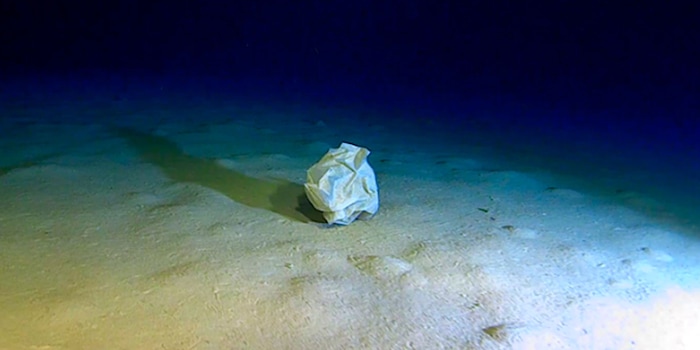
Deepest point of the Mediterranean becomes a rubbish dump
Human waste is now even being found in the deep sea. This is hardly surprising - in contrast to the amount discovered in the calypso deep in the Mediterranean.
The lowest point of the Mediterranean lies in the Calypso Deep: it descends to more than 5100 metres below sea level. And yet this distance is not enough to escape human influence: Scientists led by Elias Fakiris from the University of Patras in Greece discovered numerous pieces of plastic, glass and metal waste during an expedition to the deep-sea trench south-west of the Greek Peloponnese peninsula. The number makes it one of the highest concentrations of waste ever recorded in a deep-sea environment.
During the dive, the team counted 167 individual objects, of which at least 148 were clearly identified rubbish such as plastic bags, straps and cups, drinks cans or bottles. Based on the small area that the scientists were able to examine, they estimate that there could be more than 26,000 pieces of waste per square kilometre in the calypso deep.
According to Fakiris and co, the waste comes from various sources on land - which is only 60 kilometres away - as well as from direct input into the sea, for example from ships whose crews throw waste overboard or lose cargo and equipment. The special shape of the trench also makes it easier for waste to accumulate in it: It is a closed depression surrounded by steep walls. Once the material is trapped inside, it can no longer get out. The weak currents on the deep sea floor can hardly move the waste or even transport it beyond the edges of the calypso depression.
Every year, several million tonnes of plastic waste end up in the oceans worldwide. Only some of this is washed back onto the coasts; a large amount remains in the water and gradually breaks down into smaller and smaller particles. These are absorbed by organisms, end up in the ice at the poles or sink into the deep sea over time. There, currents also transport them further until they are finally deposited in the deep-sea trenches. Scientists have already been able to detect a total of 14 different types of plastic in sediments on the seabed: in a single location. Plans to stem this flood of plastic have made little progress so far.
Spectrum of Science
We are partners of Spektrum der Wissenschaft and want to make well-founded information more accessible to you. Follow Spektrum der Wissenschaft if you like the articles
Originalartikel auf Spektrum.de
Experts from science and research report on the latest findings in their fields – competent, authentic and comprehensible.
From the latest iPhone to the return of 80s fashion. The editorial team will help you make sense of it all.
Show all